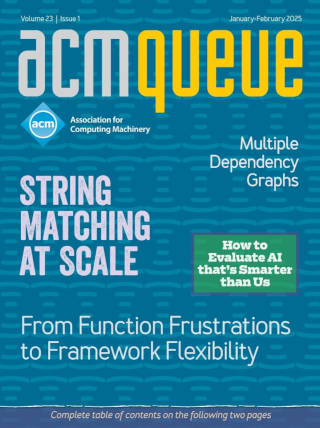
Static Analysis: An Introduction:
The fundamental challenge of software engineering is one of complexity.
Modern static-analysis tools provide powerful and specific insights into codebases. The Linux kernel team, for example, developed Coccinelle, a powerful tool for searching, analyzing, and rewriting C source code; because the Linux kernel contains more than 27 million lines of code, a static-analysis tool is essential both for finding bugs and for making automated changes across its many libraries and modules. Another tool targeted at the C family of languages is Clang scan-build, which comes with many useful analyses and provides an API for programmers to write their own analyses. Like so many things in computer science, the utility of static analysis is self-referential: To write reliable programs, we must also write programs for our programs. But this is no paradox. Static-analysis tools, complex though their theory and practice may be, are what will enable us, and engineers of the future, to overcome this challenge and yield the knowledge and insights that we practitioners deserve.
Static Analysis at GitHub:
An experience report
The Semantic Code team at GitHub builds and operates a suite of technologies that power symbolic code navigation on github.com. We learned that scale is about adoption, user behavior, incremental improvement, and utility. Static analysis in particular is difficult to scale with respect to human behavior; we often think of complex analysis tools working to find potentially problematic patterns in code and then trying to convince the humans to fix them. Our approach took a different tack: use basic analysis techniques to quickly put information that augments our ability to understand programs in front of everyone reading code on GitHub with zero configuration required and almost immediate availability after code changes.
Human-Centered Approach to Static-Analysis-Driven Developer Tools:
The future depends on good HCI
Complex and opaque systems do not scale easily. A human-centered approach for evolving tools and practices is essential to ensuring that software is scaled safely and securely. Static analysis can unveil information about program behavior, but the goal of deriving this information should not be to accumulate hairsplitting detail. HCI can help direct static-analysis techniques into developer-facing systems that structure information and embody relationships in representations that closely mirror a programmer's thought. The survival of great software depends on programming languages that support, rather than inhibit, communicating, reasoning, and abstract thinking.
Designing UIs for Static Analysis Tools:
Evaluating tool design guidelines with SWAN
Static-analysis tools suffer from usability issues such as a high rate of false positives, lack of responsiveness, and unclear warning descriptions and classifications. Here, we explore the effect of applying user-centered approach and design guidelines to SWAN, a security-focused static-analysis tool for the Swift programming language. SWAN is an interesting case study for exploring static-analysis tool usability because of its large target audience, its potential to integrate easily into developers' workflows, and its independence from existing analysis platforms.
Crashproofing the Original NoSQL Key-Value Store
Fortifying software to protect persistent data from crashes can be remarkably easy if a modern file system handles the heavy lifting. This episode of Drill Bits unveils a new crash-tolerance mechanism that vaults the venerable gdbm database into the league of transactional NoSQL data stores. We'll motivate this upgrade by tracing gdbm's history. We'll survey the subtle science of crashproofing, navigating a minefield of traps for the unwary. We'll arrive at a compact and rugged design that leverages modern file-system features, and we'll tour the production-ready implementation of this design and its ergonomic interface. This new approach is quite generic: It can enable a wide range of software to tolerate crashes.
The Software Industry IS STILL the Problem:
The time is (also) way overdue for IT professional liability
The time is way overdue for IT engineers to be subject to professional liability, like almost every other engineering profession. Before you tell me that is impossible, please study how the very same thing happened with electricity, planes, cranes, trains, ships, automobiles, lifts, food processing, buildings, and, for that matter, driving a car.
Patent Absurdity:
A case when ignorance is the best policy
The main reason a lawyer will give for not reading a software patent is that, if you run afoul of the patent and it can be shown that you had knowledge of it, your company will incur triple the damages that they would have, had you not had knowledge of the patent. That seems like reason enough to avoid reading them, but there is an even better reason, and that is, as design or technical documents, software patents suck.



